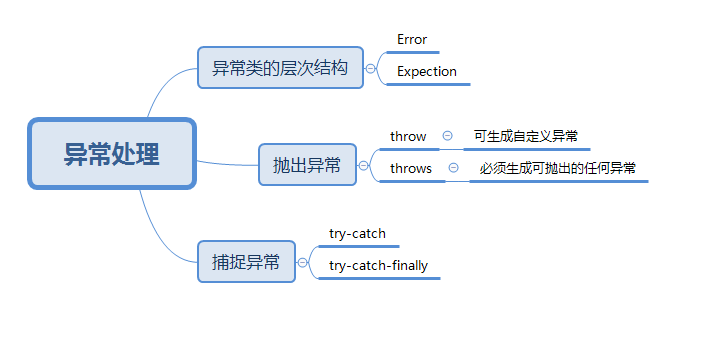201521123045 《Java程序设计》第9周学习总结
1. 本章学习总结

2. 书面作业
本次PTA作业题集异常
1.常用异常
题目5-1
1.1 截图你的提交结果(出现学号)

1.2 自己以前编写的代码中经常出现什么异常、需要捕获吗(为什么)?应如何避免?
答:通常避免数组访问越界时,一般是检查其下标看看是否越界。避免访问空指针时,用if语句判断str对象是否为空。
1.3 什么样的异常要求用户一定要使用捕获处理?
答:可能在执行方法期间抛出但未被捕获的 RuntimeException 的任何子类都无需在 throws 子句中进行声明也就是说,非RuntimeException异常类或者其子类的的异常都要声明捕, 只有RuntimeException 或者是其子类的异常是不需要进行声明捕捉的。
2.处理异常使你的程序更加健壮
题目5-2
2.1 截图你的提交结果(出现学号)

2.2 实验总结
答:当输入数组中的值不是整型时,需要捕获异常,而且需要将其删除,而且删除后数组的下标要记得。
3.throw与throws
题目5-3
3.1 截图你的提交结果(出现学号)

3.2 阅读Integer.parsetInt源代码,结合3.1说说抛出异常时需要传递给调用者一些什么信息?
Integer.parsetInt源代码: public static int parseInt(String s) throws NumberFormatException { return parseInt(s,10); } public static int parseInt(String s, int radix) throws NumberFormatException { /* * WARNING: This method may be invoked early during VM initialization * before IntegerCache is initialized. Care must be taken to not use * the valueOf method. */ if (s == null) { throw new NumberFormatException("null"); } if (radix < Character.MIN_RADIX) { throw new NumberFormatException("radix " + radix + " less than Character.MIN_RADIX"); } if (radix > Character.MAX_RADIX) { throw new NumberFormatException("radix " + radix + " greater than Character.MAX_RADIX"); } int result = 0; boolean negative = false; int i = 0, len = s.length(); int limit = -Integer.MAX_VALUE; int multmin; int digit; if (len > 0) { char firstChar = s.charAt(0); if (firstChar < '0') { // Possible leading "+" or "-" if (firstChar == '-') { negative = true; limit = Integer.MIN_VALUE; } else if (firstChar != '+') throw NumberFormatException.forInputString(s); if (len == 1) // Cannot have lone "+" or "-" throw NumberFormatException.forInputString(s); i++; } multmin = limit / radix; while (i < len) { // Accumulating negatively avoids surprises near MAX_VALUE digit = Character.digit(s.charAt(i++),radix); if (digit < 0) { throw NumberFormatException.forInputString(s); } if (result < multmin) { throw NumberFormatException.forInputString(s); }
result *= radix; if (result < limit + digit) { throw NumberFormatException.forInputString(s); } result -= digit; } } else { throw NumberFormatException.forInputString(s); } return negative ? result : -result; }
答:需要告诉到底是输入的数据类型错误或是其他的原因,要具体告诉操作者。
4.函数题
题目4-1(多种异常的捕获)
4.1 截图你的提交结果(出现学号)

4.2 一个try块中如果可能抛出多种异常,捕获时需要注意些什么?
答:一旦程序遇到异常就不会继续往下运行了,所以只能抛出一个异常。
5.为如下代码加上异常处理
byte[] content = null; FileInputStream fis = new FileInputStream("testfis.txt"); int bytesAvailabe = fis.available();//获得该文件可用的字节数 if(bytesAvailabe>0){ content = new byte[bytesAvailabe];//创建可容纳文件大小的数组 fis.read(content);//将文件内容读入数组 } System.out.println(Arrays.toString(content));//打印数组内容
5.1 改正代码,让其可正常运行。注1:里面有多个方法均可能抛出异常。注2:要使用finally关闭资源。
public static void main(String[] args) throws IOException { byte[] content = null; FileInputStream fis=null; try{ fis= new FileInputStream("testfis.txt"); int bytesAvailabe = fis.available();//获得该文件可用的字节数 if(bytesAvailabe>0){ content = new byte[bytesAvailabe];//创建可容纳文件大小的数组 fis.read(content);//将文件内容读入数组 } } catch(FileNotFoundException e){System.out.println(e);} catch(IOException e){System.out.println(e);} finally { if(fis!=null) try{ fis.close(); } catch(Exception e){System.out.println(e);} } System.out.println(Arrays.toString(content));//打印数组内容 }
5.2 使用Java7中的try-with-resources来改写上述代码实现自动关闭资源.
public static void main(String[] args) throws IOException { byte[] content = null; try (FileInputStream fis = new FileInputStream("testfis.txt");){ int bytesAvailabe = fis.available();//获得该文件可用的字节数 if(bytesAvailabe>0){ content = new byte[bytesAvailabe];//创建可容纳文件大小的数组 fis.read(content);//将文件内容读入数组 } System.out.println(Arrays.toString(content));//打印数组内容 } catch (IOException e) { e.printStackTrace(); }
3. 码云上代码提交记录





 本文总结了Java程序设计中关于异常处理的学习内容,包括常见的异常类型、如何通过捕获异常提高程序健壮性、throw与throws的区别及应用,还介绍了如何处理文件读取中的异常,并给出了具体的代码示例。
本文总结了Java程序设计中关于异常处理的学习内容,包括常见的异常类型、如何通过捕获异常提高程序健壮性、throw与throws的区别及应用,还介绍了如何处理文件读取中的异常,并给出了具体的代码示例。

















 被折叠的 条评论
为什么被折叠?
被折叠的 条评论
为什么被折叠?








